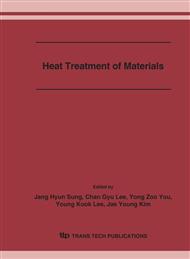p.485
p.491
p.497
p.503
p.509
p.515
p.521
p.527
p.535
Effect of Surface Condition on Melt-Out of Die-Casting Mould
Abstract:
In order to understand the melt-out mechanism of H13 die casting mould material, microstructural investigation was conducted for the immersion-tested surface in Al-alloy melt. The surface condition of H13 tool steel was modified by varying nitriding conditions and by surface blasting. In particular, long-term behavior of melt-out phenomena during immersion testing of up to 43 hours was focused in this article. It was observed that an ion-nitrided H13 surface showed higher resistance towards melt-out than a gas-nitrided or blasted surface. This was related to the surface layers that are normally formed by nitriding.
Info:
Periodical:
Pages:
509-514
Citation:
Online since:
December 2006
Authors:
Keywords:
Price:
Сopyright:
© 2006 Trans Tech Publications Ltd. All Rights Reserved
Share:
Citation:


